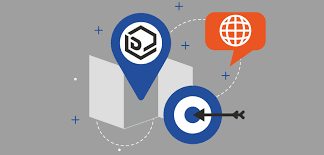Geofencing has transformed the asset management landscape by introducing cutting-edge technology that allows businesses to effectively monitor and track their resources. By setting up boundaries around locations, geofencing enables real-time asset tracking, cost reduction, and enhanced security measures. In this article, we will delve into the applications of geofencing in asset management across industries.
Understanding Geofencing
What does geofencing mean? Geofencing is a location-based service that utilizes GPS or RFID technology to establish perimeters around areas. These boundaries trigger alerts when assets enter or exit the defined zones, regardless of whether it’s a city or a specific piece of equipment at a construction site.
Advantages of Geofencing in Asset Management
Enhanced Asset Visibility
Geofencing provides businesses with insights into the whereabouts of their assets, facilitating tracking efficiency and minimizing theft risks. With location data readily available, businesses can swiftly locate assets within designated areas and respond promptly to any irregularities.
Strengthened Security Measures
Geofencing bolsters asset security protocols by enhancing monitoring capabilities and alert systems for threats. When an asset fitted with a GPS device strays beyond its boundaries, a quick notification can be sent to authorized personnel, enabling them to respond and thwart any unauthorized access or theft. This rapid reaction plays a significant role in reducing risks effectively.
Real-Time Monitoring
With the integration of geolocation technology within geofences, businesses can monitor asset movements and usage patterns over time. This data assists organizations in streamlining workflows by identifying any inefficiencies or bottlenecks that may occur during activities such as field operations or transportation.
Utilization of Geofencing in Asset Management
Fleet Management
For businesses managing vehicle fleets, like delivery services or logistics companies, maximizing fleet efficiency while ensuring on-time deliveries is paramount. Geofencing empowers businesses to establish perimeters around areas or routes and oversee fleet movements within these boundaries. This enables route optimization, evaluation of driver performance, and prompt action during situations like traffic congestion or delays.
Construction Sites
Construction project sites often contain equipment that requires monitoring to prevent theft or misuse. By deploying geofencing technology, construction firms can enforce asset management measures. Immediate alerts are triggered if equipment strays from the designated site area, allowing action to mitigate the risk of loss or unauthorized relocation.
Warehouse Operations
Within warehouses and distribution centers, geofencing technology can enhance inventory accuracy and minimize mistakes in stock management. By setting up geofences around storage areas, receiving docks, and shipping points, warehouse supervisors can ensure asset flow and monitor their whereabouts throughout the supply chain journey.
Event Coordination
The planning required for organizing large-scale events includes prioritizing security measures and crowd control strategies. Geofencing tech offers event planners a tool for maintaining perimeter security. By establishing boundaries around event venues, organizers can uphold controlled access and receive notifications in case of any unauthorized entries contributing to a safe event environment.
Utility Maintenance
Utility service providers such as water or electricity companies often face the challenge of overseeing assets spread across regions like pipelines or electrical infrastructure. Geofencing plays a role in asset monitoring by allowing supervisors to easily track when assets are approaching designated locations. Inspection teams receive alerts upon entering zones near the assets requiring evaluation, enhancing communication efficiency and reducing inspection expenses.
Retail Inventory Control
In the sector, geofencing technology proves beneficial for inventory management, monitoring merchandise movements, and enhancing customer interactions. Setting up geofences around store locations or specific sections within the store allows retailers to keep track of stock levels in time and receive notifications when certain products require restocking. Geofencing also provides opportunities for marketing by sending notifications or exclusive deals to customers entering areas of the store, enhancing their shopping experience.
Healthcare Asset Tracking
In the healthcare sector, geofencing proves beneficial for managing assets by helping hospitals and medical facilities monitor equipment and optimize their usage. By establishing geofences around storage areas for equipment or patient floors, staff can quickly locate resources. If any equipment is moved outside its designated area without authorization or misplaced within the facility, relevant personnel are promptly notified for action, minimizing equipment downtime and improving efficiency in patient care.
Conclusion
Overall, geofencing technology has emerged as an asset management tool across industries by enhancing visibility, improving security measures, enabling real-time monitoring, and optimizing operational processes. Its versatility is evident in applications such as fleet management, construction sites, warehouse systems, event planning, and utility services. Through geofencing implementation, businesses can streamline asset management practices, cut expenses, and enhance security measures to boost productivity and profitability.






